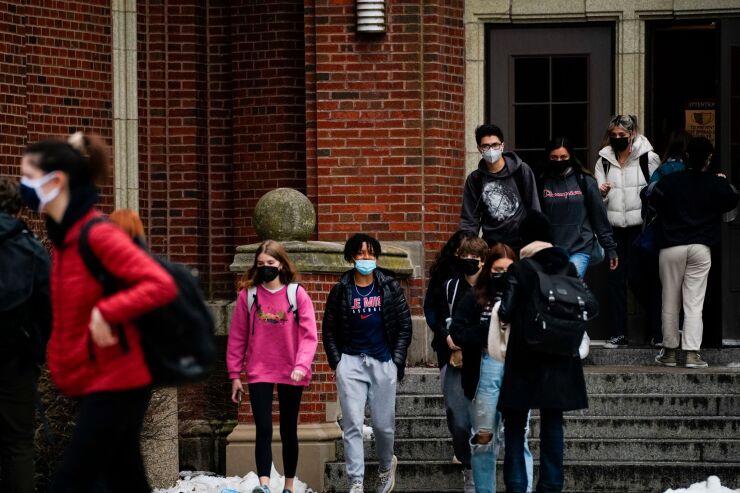School districts are struggling, analysts say
2 min read

Municipal analysts say K-12 school districts are struggling with lower enrollment, teacher shortages and increased operating costs.
With federal COVID aid drying up and other revenues falling, school district budgets are likely to suffer in the coming months and years, said Howard Cure, Evercore Director of Municipal Bond Research.
In addition, with growing charter school participation, traditional public schools are feeling the financial losses there, as well, according to Moody’s Investors Service analysts in an Oct. 18 report. The number of students in charter schools more than doubled from 2011 to 2022. .
Bloomberg News
Making matters worse for school districts’ future fiscal pictures, eight states recently added voucher programs to let parents send students to private schools, Moody’s said. States’ funding levels for school districts generally is connected to enrollment levels and charter school students are treated separately, as is charter schools’ funding.
Ashlee Gabrysch, Fitch Ratings Midwest Region Manager for Local Government, agreed with this, saying the districts were sometimes forced to spend money to remain competitive with neighboring charter and private schools supported by state vouchers.
Cure said many governments are debating how many charter schools there should be; the outcome of the debate will affect the school district’s funding levels.
School district enrollment is up in the southeast and southwest but down in the west and northeast, Moody’s said.
Gabrysch said along with being concerned about enrollment challenges and school competition pressures, Fitch Ratings was focused on teacher shortages and how districts are spending down Elementary and Secondary School Emergency Relief funds.
Sometimes the teacher shortages are found in states that pay teachers the least, she said, while other states are not producing enough new college graduates with teaching credentials.
As of March 2022, there was a 19% decrease in the number of newly certified teachers nationwide, according to the National Center for Education Statistics.
The federal government allotted ESSER funds to schools to handle the effects of COVID-19 on the districts. If the districts use the money for things like improving remote learning capacity or temporary teachers to alleviate learning loss from remote learning, Fitch sees this as OK, Gabrysch said.
However, some districts, like Chicago Public School District, have used the money to fill in structural operating gaps and this raises major financial questions as to what they will do when the money runs out.
Ratings agencies treat school districts as part of the local government sector. Their outlooks on the local government sector are stable at Moody’s and S&P and deteriorating at Fitch Ratings.







